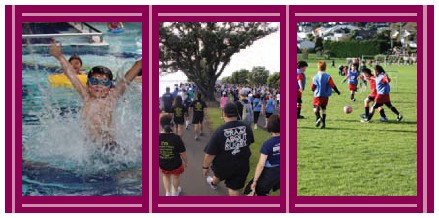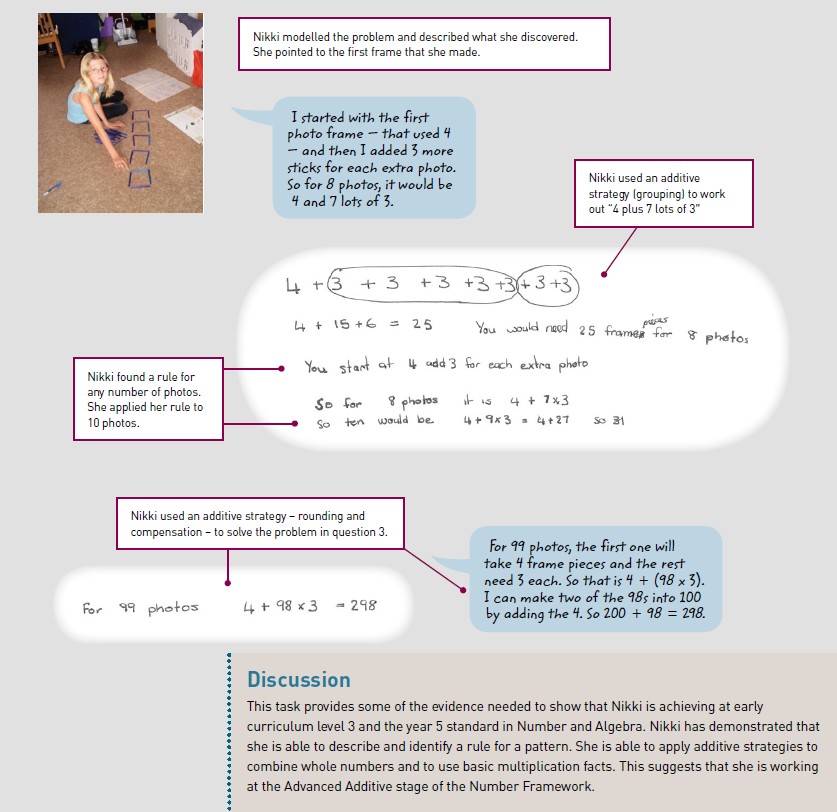
Interlocking Photo Frames: Illustrating the year 5 standard
The following examples of student work illustrate achievement at the mathematics standard for year 5.The task used in this illustration relates to achievement objectives for Number and Algebra from the mathematics and statistics learning area in The New Zealand Curriculum. It was adapted from an activity in Figure It Out, Algebra: Book One, Link (years 7–8), pages 12–13.
The Task
Interlocking Photo Frames
Nikki’s mum is on the organising committee for the new community centre. They want to hang photos of local people, community activities, and historical places around the walls.
Nikki’s mum suggests that they use a series of interlocking photo frame pieces. (Each frame has 4 pieces, but two frames “share” a piece when they are joined together.) The committee try this idea with 3 photos and find that they would need 10 frame pieces.

- If 10 frame pieces are needed for 3 photos, how many pieces are needed for 8 photos?
- Can you find a rule for the number of frame pieces needed for any number of photos? Apply your rule to different numbers of photos.
- How many frame pieces are needed for 99 photos?
Some features of students’ work used to make judgments in relation to the year 5 mathematics standard are described below. There is also an illustration of the year 6 standard for this task.
| New Zealand Curriculum: Level 3 |
National Standards: By the end of year 5 |
|
In solving problems and modelling situations, students will:
|
|
|
Number and Algebra
|
Number and Algebra
|
Hover over the image to zoom a section. Click on the image to enlarge it. Click again to close.
PDF of this task and Illustrations of the year 5 and 6 standards (1.20MB)
